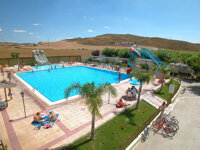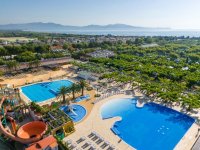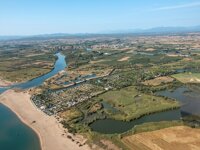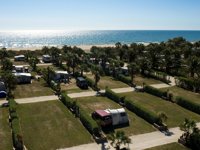Italy, Greece, France and the UK are all well recognised as boasting rich and varied histories that have shaped not only the European landscape, but have also influenced all four corners of the globe. But there is a glaring omission from this illustrious list – Spain is another European giant in terms of historical significance. Take the country’s east, for instance, where age-old towns and cities are waiting to amaze and delight in equal measure. Starting from the magnificent town of Mendigorría in the north-east and culminating in awesome Almería some 560 miles to the south, this enthralling discovery of eastern Spain enjoys some notable and fascinating stops along the way.
MENDIGORRIA

About a two-hour drive from the busy port city of Bilbao, Mendigorría is located in the heart of the Navarre region. Set alongside the River Arga, Mendigorría not only contains fascinating ruins of a Roman village and an aqueduct but it was also the site of a significant battle during the First Carlist War – a civil war that lasted from 1833 to 1840. Some 17.5 miles north-east of Mendigorría is Pamplona, best known for hosting the running of the bulls during the San Fermín festival each July, but also a city of historical significance – its city walls, cathedral and Gothic-style churches all worthy of exploration.
Where to camp nearby
GIRONA

Known as the ‘City of the Four Rivers’ – it is situated on the confluence of the Ter, Güell, Galligants and Onyar – Girona is found in north-east Catalonia and is renowned for its well-preserved medieval architecture and Roman remains. About 20 miles from the Costa Brava coast and 60 miles north-east of Barcelona, Girona has so much of historical interest – including the Catalan Gothic cathedral, some remains of the Roman wall and lookout towers which were largely rebuilt during the 14th century and the Romanesque-style monastery of Sant Pere de Galligants.
Add the Barri Vell historic quarter (or Girona Old Town) with its steep stone staircases, 12th-century Arab Baths, the Cases de l’Onyar (picturesque and colourful houses on the banks of the River Onyar) and El Call (the Jewish quarter that is a labyrinth of narrow streets and courtyards) into the equation, and Girona is a city that will demand your attention for more than a day. Should your thirst for history not be quenched by Girona itself, both the Greco-Roman site of Empúries near the harbour town of L’Escala and the Roman fort at Sant Julià de Ramis are not a million miles away.
Where to camp nearby
TARRAGONA

This picturesque port city on the Costa Dorada is equal part historical sites, beautiful beaches and Catalan culture, with ancient ruins remaining from its time as the Roman colony of Tarraco. This ancient heritage is no better highlighted than by the Amphitheatre that looks out over the Mediterranean Sea, the Praetorium (tower), the Circus (which once held horse-drawn chariot races) and the Necropolis – one of the best-preserved cemeteries of the late Roman Empire..
Oh, and don’t miss the Ferreres Aqueduct, an absolute masterpiece of Roman engineering that spans a valley about two miles north of the city – this impressive structure is 817ft (249m) long and 89ft (27m) high. It’s little wonder that Tarragona and its ruins have been designated a World Heritage Site by UNESCO
Where to camp nearby
VALENCIA

Located on the banks of the River Turia and the Mediterranean Sea, Valencia is one of the oldest cities in Spain – it was founded as a Roman colony way back in 138BC – and a real treat for history buffs. From the ancient winding streets of the Barrio del Carmen, which contains buildings dating back to periods of control by Roman and Arab empires, to the Gothic-style Silk Exchange market, which UNESCO has declared as a World Heritage Site, Valencia unveils its history at every step and turn.
Add the cathedral and its bell tower, the ornate City Hall, the University of Valencia (one of the oldest surviving universities in Spain), the Museum of Fine Arts and the Sant Joan de l'Hospital church built in 1316 into the mix, and you’ll be strolling the Valencian streets until your feet are sore. By vivid contrast, L’Hemisfèric (IMAX Dome cinema), Palau de les Arts Reina Sofia (opera house), Assut de l’Or Bridge and Museu de les Ciències Príncipe Felipe (science museum) are some of the finest examples of modern architecture anywhere in Europe.
Where to camp nearby
ALICANTE

Many tourists are attracted to this Mediterranean port on the Costa Blanca for its stunning coastline, which boasts a plethora of beautiful beaches and secluded coves, but those with an interest in architecture and history are also in for a real treat – hardly surprising when you realise this area has been inhabited for over 7,000 years!
Alicante’s old town, Barrio de Santa Cruz, with its narrow streets and coloured houses is bound to attract your attention, as will the medieval Castillo de Santa Bárbara. This ancient castle stands imperiously atop Mount Benacantil offering unrivalled views of the city, the Mediterranean coast and its surrounding areas. The pièce de résistance, however, is probably the fascinating archeological site of Tossal de Manises, the ancient city of Lucentum (the Roman predecessor of Alicante) at nearby Albufereta.
Where to camp nearby
ALMERIA

Dominated by the imposing and majestic Alcazaba, the biggest citadel built by the Arabs in Spain, the Andalusian city of Almeria can trace its history all the way back to the year 955. In addition to the aforementioned Moorish fortress that overlooks the city with a protective eye, Almeria has plenty to interest the history buff, from its 16th-century cathedral with astonishing Gothic ribbed ceiling to the fascinating air raid shelters, a 4.5km maze of underground shelters complete with surgery room and food storage which were designed to protect approximately 40,000 people from bombing during the Spanish Civil War of 1936-39.











